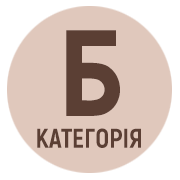CRITERIA, INDICATORS, AND LEVELS OF DEVELOPMENT OF CROSS-CUTTING SKILLS AMONG PRIMARY SCHOOL STUDENTS IN EXTRACURRICULAR EDUCATIONAL INSTITUTIONS
DOI:
https://doi.org/10.32782/2412-9208-2024-3-76-84Keywords:
criteria, indicators, levels of proficiency, younger schoolchildren, crosscutting skills, extracurricular educational institutionsAbstract
The article investigates the criteria, indicators, and levels of formation of cross-cutting skills of younger schoolchildren in extracurricular educational institutions. The research results emphasize the importance of systematic measurement of the level of formation of skills in younger students and provide recommendations for optimal approaches to their assessment and development. The work is aimed at improving the quality of education and increasing the effectiveness of extracurricular institutions in forming key competencies of students of a younger school age, which is an important aspect of modern educational policy. The analysis of these issues opens up prospects for further research and the development of new methodologies and programs aimed at integrated development of students in the extracurricular environment. It is important to emphasize that education should meet the requirements of modern society, providing students not only with knowledge but also with the development of critical thinking, communicative, and creative abilities. Such a comprehensive approach to the assessment and development of the skills of younger schoolchildren is an important stage in preparing them for successful competitiveness in the modern world. Further improvement of this approach can become a key to improving the quality of education and the readiness of the younger generation for the challenges of today and the future. The author draws attention to the need for the development of individual abilities of each student through innovative methods and programs that take into account their uniqueness and promote going beyond the boundaries of standard educational templates. This approach will enable the full development of each individual and prepare the younger generation for the challenges and opportunities of the modern world. Ensuring access to education for all segments of society, including socially vulnerable groups, and the development of programs and initiatives aimed at reducing inequality in the educational process. Only under conditions of equal opportunities in education can we achieve the full development of the potential of every child and ensure the sustainable growth of society.
References
Анєнкова І. П. Критерії і показники якості освіти у ВНЗ. Вісник Одеського національного університету. 2011. № 8, С. 1–4.
Бабанський Ю. К. Оптимізація навчально-виховного процесу. Київ, Україна: Видавництво "Київ", 2000.
Бех І. Д. Виховання особистості: Сходження до духовності. Київ, Україна: Либідь, 2006
Буркова Л. В. Класифікація педагогічних інновацій як елемент механізму управління інноваційним процесом в освіті. Педагогічні інновації: ідеї, реалії, перспективи: збірник наукових праць. Київ, Україна: Видавництво "Київ", 2000. С. 231–238.
Бусел В. Т. (ред.). Великий тлумачний словник сучасної української мови: 250 000 слів. Київ, Україна: Ірпінь: Перун. 2009.
Кабінет Міністрів України. Державний стандарт початкової освіти, затверджений постановою № 87 від 21 лютого 2018 року. URL: https://zakon.rada.gov.ua/laws/show/87-2018-%D0%BF#Text.
Міністерство освіти і науки України. (2016). Концепція Нової української школи. URL: https://mon.gov.ua/ua/tag/nova-ukrainska-shkola
Колос К. Р. Факторно-критеріальна модель оцінювання ефективності комп'ютерно-орієнтованого навчального середовища закладу післядипломної педагогічної освіти. Іnformatіon Technologіes іn Educatіon, 2015. № 22, С. 80–92.






